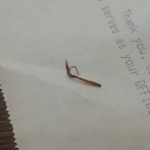Despite warnings from the PDA (Philippine Dental Association, such as the one pictured below,) against the use of DIY (do-it-yourself) or self-applied braces, a lot of people are still patronizing such products.

In a society such as ours where image is everything, braces have become a status symbol. Costing upwards of 60 thousand when availed of from dental clinics, it’s no wonder that braces have become an indicator of how moneyed a person is.
Meanwhile, DIY sets being sold online go for as low as 2,000 pesos. Perhaps not surprisingly, those who need braces but can’t afford it, or those who only want to flaunt this queer status symbol readily jump at the chance to own a set that cheap. There are even tutorials uploaded on YouTube on how to apply braces on your own, and even on using everyday products such as rubber bands in lieu of the more expensive dental appliances.

Though these “instructional” videos make it seem easy, an expert in the field explained in a recent interview with The DailyPedia that the process is actually far from simple.
Dr. Stephen Almonte is a faculty member of the CEU (Centro Escolar University) School of Dentistry, an active member of the Philippine Prosthodontic Society, a past Trustee of the PDA Board, and Fellow of both the Pierre Fauchard Academy and the Philippine Academy of Implant Dentistry.
Speaking generally, Dr. Almonte states that “DIY is dangerous.” First of all, he explains that “orthodontics, or movement of teeth for proper alignment, is meant not just for aesthetic reasons but also to establish balance in the stomatognathic system, which includes the occlusion, or bite of the patient, and the maintenance of the overall health of the periodontium, which is the foundation of the stability and health of the teeth.”
If an untrained person persists in the practice, it could result, among others, in unsightly gum recession. “Application of forces intended to move teeth must be controlled and properly monitored by a dental professional.” Instead of improving appearances, could end up damaging it even more.
Worse, Dr. Almonte emphasizes, “the greater danger would be the disruption of the intended modeling and remodeling of the bone. This results in bone loss, which is the primary support of the tooth structure.” Without proper support from the bone, a tooth may become loose in its socket, or worse, it might even come off on its own.

Another danger lies in the cement used to fix the brackets into place on the teeth. “The adhesives used, which may not be properly regulated in the market, could contain dangerous chemicals harmful not just to the mouth, but to the entire body… these products when improperly used can be detrimental to the overall health of the patient.”
The doctor cannot emphasize enough that a “dental professional needs to evaluate and properly diagnose both the skeletal and dental profile of each patient in order to prescribe the correct treatment plan.”
“After all,” he concludes, “teeth is just 50 percent what we see inside of the patient’s mouth.” Something that isn’t readily realized by an average person.



One Comment